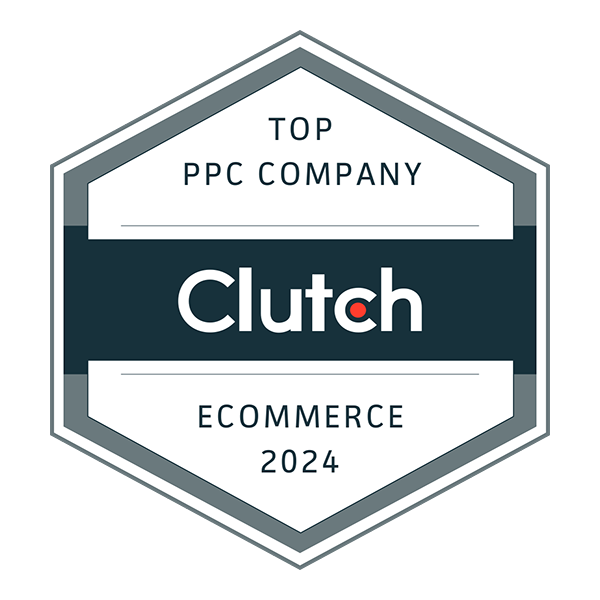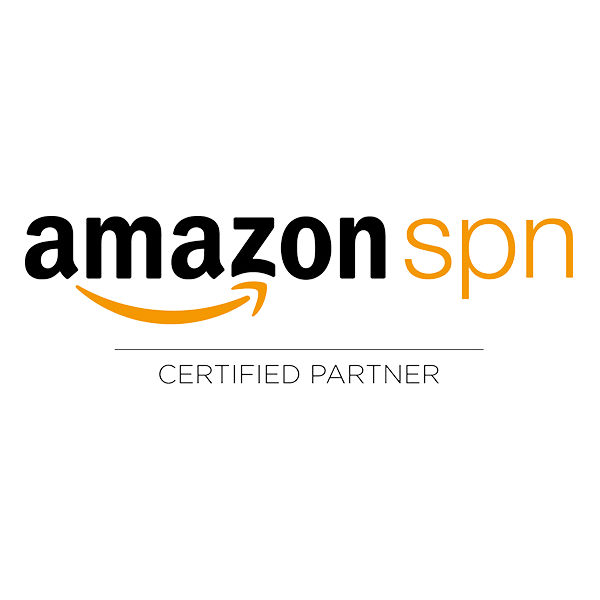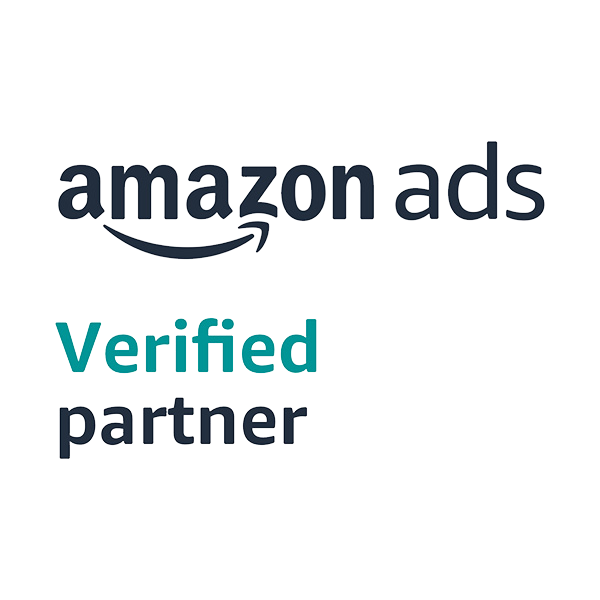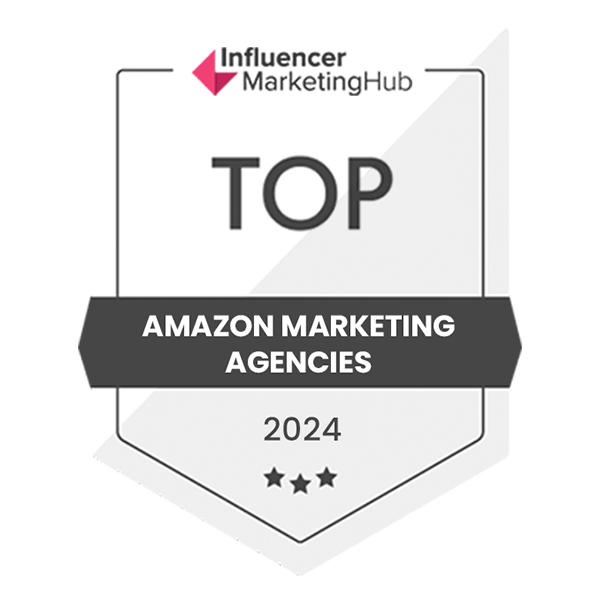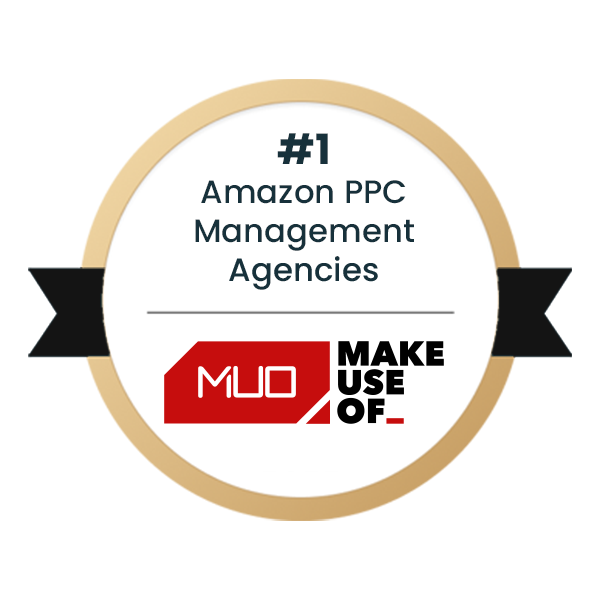Introduction: Why Amazon PPC is Non-Negotiable in 2025
With over 310 million active users and 2.5 billion products listed on Amazon, standing out organically has become nearly impossible for new sellers. Amazon PPC (Pay-Per-Click) advertising isn’t just an option anymore—it’s a necessity for survival and growth on the platform.
Consider this: 70% of Amazon shoppers never click past the first page of search results, and sponsored products occupy up to 50% of that prime real estate. Without PPC, your products are essentially invisible, regardless of their quality or value proposition.
This comprehensive guide will transform you from a complete beginner to a confident Amazon PPC practitioner. We’ll cover everything from basic terminology to advanced optimization techniques, ensuring you have the knowledge to launch, manage, and scale profitable campaigns.
Understanding Amazon PPC: The Foundation
What Exactly is Amazon PPC?
Amazon PPC is an advertising model where sellers bid on keywords to display their products in prominent positions across Amazon’s platform. You only pay when a shopper clicks on your ad—hence “pay-per-click.” Think of it as renting premium shelf space in the world’s largest online store, but you only pay rent when someone actually notices and interacts with your product.
The beauty of Amazon PPC lies in its intent-driven nature. Unlike social media advertising where you’re interrupting someone’s browsing experience, Amazon shoppers are already in buying mode. They’re searching with credit cards in hand, making Amazon PPC one of the highest-converting advertising platforms available.
The Amazon PPC Ecosystem: Three Pillars of Success
Amazon offers three primary advertising types, each serving different strategic purposes:
- Sponsored Products represent 75% of Amazon’s ad revenue for good reason—they’re the workhorses of Amazon PPC. These ads appear seamlessly within search results and product pages, mimicking organic listings but with a small “Sponsored” label. They’re perfect for beginners because they’re straightforward to set up and deliver immediate results.
- Sponsored Brands (formerly Headline Search Ads) appear at the top of search results, featuring your brand logo, a custom headline, and up to three products. These ads are ideal for brand building and capturing high-intent traffic, though they require brand registration and more sophisticated creative strategies.
- Sponsored Display ads use Amazon’s demand-side platform to retarget shoppers both on and off Amazon. These ads can appear on product detail pages, customer review pages, and even third-party websites. While powerful for remarketing, they’re typically reserved for more advanced advertisers with larger budgets.
The Economics of Amazon PPC: Understanding Your Investment
Key Metrics That Determine Success
Before diving into campaign creation, you must understand the financial metrics that will guide every decision:
- ACoS (Advertising Cost of Sale) is your north star metric, calculated as (Ad Spend ÷ Ad Revenue) × 100. If you spend $25 on ads to generate $100 in sales, your ACoS is 25%. The “ideal” ACoS varies by product and business goals, but generally, keeping it below your profit margin ensures profitability.
- TACoS (Total Advertising Cost of Sale) provides a holistic view by measuring (Ad Spend ÷ Total Revenue) × 100. This metric captures the “halo effect” of advertising—how PPC drives organic sales through improved rankings and visibility. A declining TACoS over time indicates healthy business growth.
- ROAS (Return on Ad Spend) is the inverse of ACoS, showing dollars earned per dollar spent. A ROAS of 4 means you earn $4 for every $1 invested in advertising. While simpler to understand than ACoS, it’s less commonly used in Amazon PPC discussions.
Budget Planning: How Much Should You Actually Spend?
New sellers often ask, “How much should I budget for PPC?” The answer depends on multiple factors, but here’s a practical framework:
Start with 10-15% of your expected revenue as your PPC budget. If you’re targeting $10,000 in monthly sales, allocate $1,000-$1,500 for advertising. This might seem high, but remember: PPC is an investment in market share and organic rankings, not just immediate sales.
During the launch phase, be prepared to operate at a higher ACoS (40-60%) as you gather data and establish presence. Your goal isn’t immediate profitability but rather visibility and sales velocity. As you optimize campaigns and improve organic rankings, your ACoS should gradually decrease to profitable levels.
Setting Up Your First Campaign: A Step-by-Step Walkthrough
Pre-Campaign Checklist: Essential Preparations
Before creating your first campaign, ensure these fundamentals are in place:
- Optimized Product Listing: Your listing is your landing page. Ensure your title includes primary keywords, your bullet points address customer pain points, your images showcase the product from multiple angles, and your A+ Content (if available) tells a compelling brand story. Poor listings waste ad spend because even perfect targeting won’t convert unpersuasive content.
- Competitive Pricing: Research your top 10 competitors’ pricing. If you’re priced 20% higher without clear differentiation, PPC won’t overcome that handicap. Consider introductory pricing to build initial momentum and reviews.
- Inventory Management: Nothing kills momentum faster than stockouts. Ensure you have at least 6-8 weeks of inventory before launching aggressive PPC campaigns. Running out of stock resets your ranking gains and wastes all previous ad spend investments.
Campaign Creation: Your First Automatic Campaign
We recommend starting with an automatic campaign for several strategic reasons. Automatic campaigns let Amazon’s algorithm identify relevant keywords you might never have discovered manually. They require minimal setup, making them perfect for beginners, and they provide valuable search term data for future manual campaigns.
Here’s your setup process:
- Navigate to Campaign Manager in Seller Central
- Click “Create Campaign” and select “Sponsored Products”
- Choose “Automatic Targeting” for your targeting strategy
- Set your campaign name using this convention: “AUTO – [Product Name] – [Date]”
- Set a conservative daily budget of $20-30 initially
- Select your campaign bidding strategy: Start with “Dynamic Bids – Down Only”
- Create an ad group with all variations of your product
- Set your default bid at $0.75 (adjust based on your product price)
- Enable all four targeting groups: Close Match, Loose Match, Substitutes, and Complements
Let this campaign run for 7-14 days without major changes. You’re in data collection mode, and premature optimization can disrupt the learning process.
Keyword Research: The Foundation of Manual Campaigns
After your automatic campaign generates sufficient data, it’s time to launch manual campaigns with strategic keyword targeting. Effective keyword research combines multiple data sources:
- Amazon’s Search Bar provides free, real-time keyword suggestions. Type your main keyword and note all autocomplete suggestions. These represent actual customer searches, making them highly valuable.
- Search Term Reports from your automatic campaigns reveal exactly what terms triggered your ads. Download this report weekly and identify terms with high clicks and conversions.
- Competitor Analysis involves studying successful competitors’ listings. What keywords appear in their titles? What terms do they emphasize in bullet points? Tools like Helium 10 or Jungle Scout can reverse-engineer competitor keywords, but manual analysis is surprisingly effective.
- Third-Party Tools like Helium 10’s Cerebro, Jungle Scout’s Keyword Scout, or SellerApp provide search volume data and competitive metrics. While helpful, don’t rely solely on tools—combine their data with real campaign performance.
Manual Campaign Structure: Building for Scale
Organize manual campaigns by match type for maximum control:
- Exact Match Campaign: Target your highest-converting keywords from automatic campaigns. Start with 10-20 keywords with at least 3 conversions each. Bid aggressively (20-30% above suggested bid) since these are proven winners.
- Phrase Match Campaign: Include broader variations of your successful exact match keywords. If “yoga mat non slip” converts well, target “yoga mat” as phrase match to capture “best yoga mat for beginners” and similar searches.
- Broad Match Campaign: Use sparingly for discovery purposes. Include only 5-10 highly relevant root keywords. Monitor closely as broad match can quickly drain budgets on irrelevant searches.
Advanced Optimization Strategies: Maximizing Performance
Negative Keywords: Your Budget Protection System
Negative keywords prevent your ads from showing for irrelevant searches, protecting your budget from waste. After two weeks of campaign data, implement this negative keyword strategy:
Identify keywords with more than 10 clicks but zero conversions. Add these as negative exact matches to prevent future waste. Look for pattern-based negatives: if multiple searches containing “cheap” don’t convert, add “cheap” as a negative phrase match.
Create a universal negative list for obviously irrelevant terms. If you sell yoga mats, negative keywords might include “yoga pants,” “yoga blocks,” or “free yoga mat.” Apply this list to all campaigns to prevent waste from day one.
Bid Optimization: The Art and Science of Profitable Bidding
Successful bid management balances visibility with profitability. Here’s a systematic approach:
Week 1-2: Bid at Amazon’s suggested bid to establish baseline performance. Don’t optimize prematurely—you need statistically significant data.
Week 3-4: Adjust bids based on ACoS performance:
- Keywords with ACoS below target: Increase bids by 10-15% to capture more volume
- Keywords with ACoS at target: Maintain current bids
- Keywords with ACoS above target: Decrease bids by 10-15% or pause if consistently unprofitable
Ongoing: Implement day-parting strategies. If your products convert better during specific hours (e.g., evening hours for consumer products), adjust bids accordingly using automated rules or third-party tools.
Search Term Graduation: Scaling Winners
Implement a systematic “graduation” process for search terms:
When a search term in your automatic campaign generates 3+ conversions at acceptable ACoS, “graduate” it to an exact match manual campaign. Add the term as a negative exact match in the automatic campaign to prevent overlap. This ensures you’re bidding appropriately for proven winners while letting automatic campaigns continue discovering new opportunities.
Campaign Types and Strategies: Choosing Your Approach
Product Launch Campaigns: Building Initial Momentum
Launching a new product requires aggressive PPC strategies to overcome the “zero reviews” handicap:
- Honeymoon Period Strategy: Amazon gives new ASINs a ranking boost for 30-45 days. Capitalize on this by running aggressive campaigns with higher budgets and bids. Target 50-60% ACoS initially—you’re buying data and rankings, not immediate profit.
- Competitor Targeting: Create separate campaigns targeting competitor ASINs and brand names. When someone views your competitor’s product, your ad appears as an alternative. Start with competitors having similar prices but fewer or worse reviews.
- Long-Tail Focus: Target specific, long-tail keywords with lower competition. Instead of “yoga mat,” target “extra thick yoga mat for bad knees.” These terms have lower search volume but higher conversion rates and lower CPCs.
Defensive Campaigns: Protecting Your Territory
Once established, implement defensive strategies to maintain position:
- Brand Defense: Bid aggressively on your brand name and product-specific terms. Competitors will target these keywords to steal your customers. While it seems unfair to pay for your own brand traffic, the alternative is losing sales to competitors.
- ASIN Defense: Create campaigns targeting your own ASINs to dominate your product pages. This prevents competitors from appearing on your listings and potentially stealing sales.
Scaling Campaigns: Growing Profitably
After achieving consistent profitability, scale strategically:
- Budget Liberation: Remove daily budget caps on consistently profitable campaigns. Amazon will naturally limit spend based on available impressions, and capping profitable campaigns restricts growth.
- Geographic Expansion: If successful in the US, replicate campaigns in Canada, UK, and other English-speaking markets. Use successful US keywords as starting points but expect different performance metrics.
- Product Expansion: Apply successful keywords to related products. If “organic yoga mat” works for your premium mat, test it for your budget-friendly option.
Troubleshooting Common Problems: Solutions That Work
“My Campaigns Aren’t Spending”
This frustrating issue has several causes and solutions:
- Low Bids: If your bids are below market rate, you won’t win auctions. Increase bids by 25-50% and monitor if spending increases. Check the suggested bid range in Campaign Manager for guidance.
- Poor Listing Quality: Amazon prioritizes ads for listings likely to convert. Improve your listing with better images, comprehensive bullet points, and competitive pricing. A poor listing quality score restricts ad delivery regardless of bid amounts.
- Limited Keyword Selection: Targeting only 5-10 keywords limits spending potential. Expand to 30-50 relevant keywords across different match types to increase impression opportunities.
“High ACoS Despite Optimizations”
When ACoS remains stubbornly high, investigate these factors:
- Pricing Issues: Calculate your true break-even ACoS including all costs (COGS, Amazon fees, shipping). If your margin is only 20%, achieving 15% ACoS might be unrealistic without price adjustments.
- Conversion Rate Problems: If your conversion rate is below 10%, the issue isn’t PPC but your listing or pricing. Audit competitor listings to identify why customers choose alternatives.
- Wrong Keywords: High-volume keywords aren’t always profitable keywords. Focus on commercial intent keywords (“buy,” “best,” “reviews”) rather than informational ones (“how to,” “what is”).
“Organic Rankings Aren’t Improving”
PPC should boost organic rankings, but sometimes the connection breaks:
- Inconsistent Sales Velocity: Sporadic PPC spending creates inconsistent sales patterns. Amazon rewards consistent daily sales over occasional spikes. Maintain steady daily budgets rather than periodic splurges.
- Low Conversion Rates: If PPC drives traffic but few sales, Amazon interprets this as customer dissatisfaction. Improve your listing before scaling PPC spending.
- Keyword Relevance: Ensure PPC keywords align with your organic optimization. If you’re PPC-targeting “yoga mat” but your listing emphasizes “exercise mat,” the ranking boost diminishes.
Measuring Success: KPIs and Reporting
Daily Metrics to Monitor
Create a daily routine for these critical checks:
- Spend Pacing: Ensure campaigns are spending 80-100% of daily budgets. Underspending indicates bid or keyword issues; overspending might require budget increases.
- ACoS Trends: Look for sudden spikes indicating problems. A jump from 25% to 40% ACoS warrants immediate investigation.
- Impression Share: Monitor whether impressions are growing or shrinking. Declining impressions suggest increasing competition or decreasing relevance.
Weekly Analysis and Optimization
Dedicate 2-3 hours weekly to deep analysis:
- Search Term Report Analysis: Download and analyze new search terms. Identify graduation candidates and negative keyword opportunities. This single report drives most optimization decisions.
- Keyword Performance Review: Evaluate each keyword’s performance over the past 30 days. Pause keywords with 50+ clicks and zero conversions. Increase bids on profitable keywords below average position 1-3.
- Competition Monitoring: Check if new competitors are advertising on your keywords. Sudden ACoS increases often indicate new, aggressive competitors.
Monthly Strategic Reviews
Monthly reviews guide strategic decisions:
- Portfolio Performance: Analyze performance across all products. Shift budget from underperformers to winners. Sometimes killing unsuccessful products is the best optimization.
- Seasonal Adjustments: Anticipate seasonal trends. Yoga mats sell better in January (New Year’s resolutions) than July. Adjust budgets and bids accordingly.
- Profitability Analysis: Calculate true profitability including all costs. If PPC consistently operates at a loss despite optimizations, reconsider your product selection or pricing strategy.
Tools and Software: Amplifying Your Efforts
Free Tools for Beginners
Start with these no-cost options:
- Amazon Campaign Manager: Often underutilized, the native platform provides suggested bids, placement adjustments, and basic automation through rules.
- Search Term Reports: Your most valuable free resource. Download weekly and analyze in Excel or Google Sheets.
- Amazon Brand Analytics (requires Brand Registry): Provides search frequency rank and competitor insights unavailable elsewhere.
Paid Tools for Scaling
When managing multiple products or spending $5,000+ monthly, consider:
- Helium 10: Comprehensive suite including keyword research (Cerebro), PPC management (Adtomic), and listing optimization. Best for sellers wanting an all-in-one solution.
- Perpetua: Advanced algorithmic bidding and automation. Ideal for large catalogs where manual management becomes impossible.
- SellerApp: Budget-friendly option with solid PPC management and profit analytics. Good for intermediate sellers not ready for enterprise solutions.
Building Your Tech Stack
Combine tools strategically:
Use Helium 10 for keyword research, native Campaign Manager for campaign creation, Excel/Google Sheets for analysis, and consider automation tools only after mastering manual management. Tools amplify skills but don’t replace understanding.
2025 Trends and Future-Proofing Your Strategy
Video Ads: The New Frontier
Amazon’s investing heavily in video advertising. Sponsored Brands Video ads show 5-10x higher click-through rates than static ads. Start experimenting with simple product demonstration videos using smartphones—production value matters less than authenticity.
AI and Automation: Friend or Foe?
Amazon’s AI-driven campaign recommendations are improving rapidly. While not perfect, they’re worth testing with small budgets. Set up parallel campaigns—one following AI recommendations, another with manual optimization—and compare results.
International Expansion: Beyond the US
With US markets increasingly saturated, international expansion offers growth opportunities. UK and German markets are particularly attractive for English-speaking sellers. Use US keyword data as starting points but expect different customer behaviors and competitive landscapes.
Amazon DSP: The Next Level
Demand-Side Platform advertising allows sophisticated retargeting and audience building. While complex and expensive (minimum $10,000 monthly spend), DSP represents the future of Amazon advertising for serious brands.
Conclusion: Your 90-Day Action Plan
Success with Amazon PPC requires patience, persistence, and systematic optimization. Here’s your roadmap:
- Days 1-30: Launch automatic campaigns for all products. Focus on learning the platform and gathering data. Expect high ACoS as you’re in learning mode.
- Days 31-60: Launch manual campaigns based on automatic campaign data. Implement negative keywords aggressively. Begin bid optimization based on performance data.
- Days 61-90: Scale winning campaigns by removing budget caps. Pause unsuccessful products or keywords. Develop campaign templates for future product launches.
Remember: Amazon PPC is a marathon, not a sprint. Every successful Amazon seller started exactly where you are now. The difference between success and failure isn’t talent or luck—it’s persistence and continuous optimization.
Your products deserve visibility, and Amazon PPC is your vehicle to achieve it. Start with one campaign today. Make mistakes, learn from them, and optimize relentlessly. Within 90 days, you’ll have transformed from a complete beginner to a confident practitioner driving profitable growth through strategic advertising.
The question isn’t whether you can succeed with Amazon PPC—it’s whether you’ll start today or let competitors capture your potential customers. The choice, and the opportunity, is yours.
Ready to implement these strategies? Download our free Amazon PPC Setup Checklist and Budget Calculator to ensure you’re starting with the right foundation. Your successful Amazon PPC journey begins with a single campaign—launch yours today.


